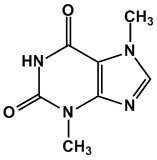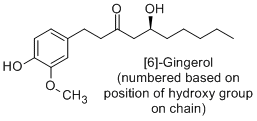Introduction:
Rhubarb plays a strong role in the traditional Chinese therapy and is commonly used as a laxative and a bitter stomachic. It is also known as Rheum, Chinese Rhubarb, rhaptonic, da-huang, ta-huang, radix et rhizoma rhei and Turkey rhubarb. Approximately 60 species of Rheum have been found of which 40 are Chinese. Out of these, minimum 18 possess medicinal properties. As per the official pharmacopoeia (both E.P. and B.P.) the drug is required to contain not less than 2.2% of hydroxyanthraquinone derivatives calculated as rhein. Chrysophamol, emodin, aloe-amodin, rhein, physcion were the free anthraquinones to be first isolated and to be found in nearly all species.
Rhubarb (Anthraquinone Derivative- Glycosides)
| Biological Source | Dried underground parts (rhizome and root) of Rheum officinale or Rheum palmatum or hybrid of both are used for medicinal purposes |
| Family | Polygonaceae |
| Geographical Source | Rheum officinale or Rheum palmatum are grown in China whereas the other species Rheum webbianum or Rheum emodi are native to India, Pakistan or Nepal. |
| Morphology/Macroscopical Characters |
1. Shensi/Chinghai type or High Grade– High grade rhubarb when fractured gives a marbled or ‘nutmeg’ fracture. Also it has a characteristic bright pink color upon fracturing. The powder of such grade of rhubarb is generally bright yellow. 2. Canton type or Medium Grade– The general characteristics are similar to high grade except for lesser attention has been given to its preparation. Fracturing such a rhubarb gives a more granular fracture which is a pale pink color. Poor trimming and greyish patches on the outer surface yields a medium grade rhubarb. 3. Third Grade– The size of the rhubarb in this grade is generally smaller. Fracturing such rhubarb yields a brownish grey color fracture which also yields a less yellow powder. |
| Microscopic Characters |
|
| Chemistry | Chrysophamol, emodin, aloe-amodin, rhein, physcion were the free anthraquinones to be first isolated and to be found in nearly all species. Also glycosides of some of the above were also isolated. However these substances did not give a satisfactory explanantion for the drug action and thus later the following types of anthraquinones were established in rhubarb. 1. Anthraquinones without a carboxy group-Chrysophamol, emodin, aloe-amodin, physcion. Chrysophanein and glucoaloe-emodin (glycosides) fall under this category too. 2. Anthraquinones with a carboxy group– Rhein and its glycoside, glucorhein. 3. Anthrones or dianthrones of emodin or physcion or chrysophanol or aloe-emodin. 4. Heterodianthrones obtained from two different anthrones– Combination of aloe-emodin anthrone and emodin anthrone (Palmidin A), combination of aloe-emodin and chrysophanol anthone (Palmidin B), combination of emodin anthrone and chrysophanol anthrone (Palmidin C). The R. palmatum species contains sennosides as well for purgative action. |
| Chemical Tests | Rhubarb powder + 10 ml ferric chloride solution + 5ml HCl is heated on a water bath for 10 mins. It is then filtered and extracted with 10ml CCl4. The extracted organic layer is separated and mixed with 5ml H2O and treated with 5 ml dilute NH3 solution. Rose pink to cherry red color is obtained. |
| Adulterants/Allied drugs/ Substitutes | Rhaptonic rhubarb is one type of rhubarb which does not contain anthraquinone derivatives. However, this type of rhubarb contains rhaponticin (a glycoside) which is a stilbene derivative. The desoxyrhaponticin gives a characteristic fluorescence to rhaptonic rhubarb.
Chemical Test for Rhaptonic Rhubarb- macerate powdered rhaptonic rhubarb with 10mL of 45% ethanol (or other alcohol) for 20 minutes. Filter this solution and spot this filtrate on a filter paper and observe under UV light. Rhaptonic rhubarb gives a distinct blue colored fluorescence. The official test given in the BP requires a TLC to be performed. Uses- Rhaponticin is found to be useful as antithrombotic, antiallergic and antidiabetic in preliminary studies. |
| Uses | Classically used as cathartic and stomachic (increases the peristalsis of the colon without affecting the peristaltic movement of the stomach and duodenum thus helps GI bleeds patients), but not suitable for the treatment of chronic constipation. Also helps in hemorrhoids and diarrhea.
Other proposed uses of the drug include:
|
| Other Notes (life cycle, extraction etc.) | – |
References:
- Trease and Evans’ Pharmacognosy, 16e (Evans, Trease and Evans Pharmacognosy)
Elsevier: New York, 2009. - Ara DerMarderosian, et. al. The Review of Natural Products 4th Edition.
- Kokate, C. K.; Gokhale, S. B.; Purohit, A. P. A textbook of Pharmacognosy, 29th ed.; Nirali Prakashan: Pune, 2009.





Nice infor…….
This text phenomenon is very clear and each point is nice bcoz the point should be easly to read and easly to gotted so i like me that page thanx.